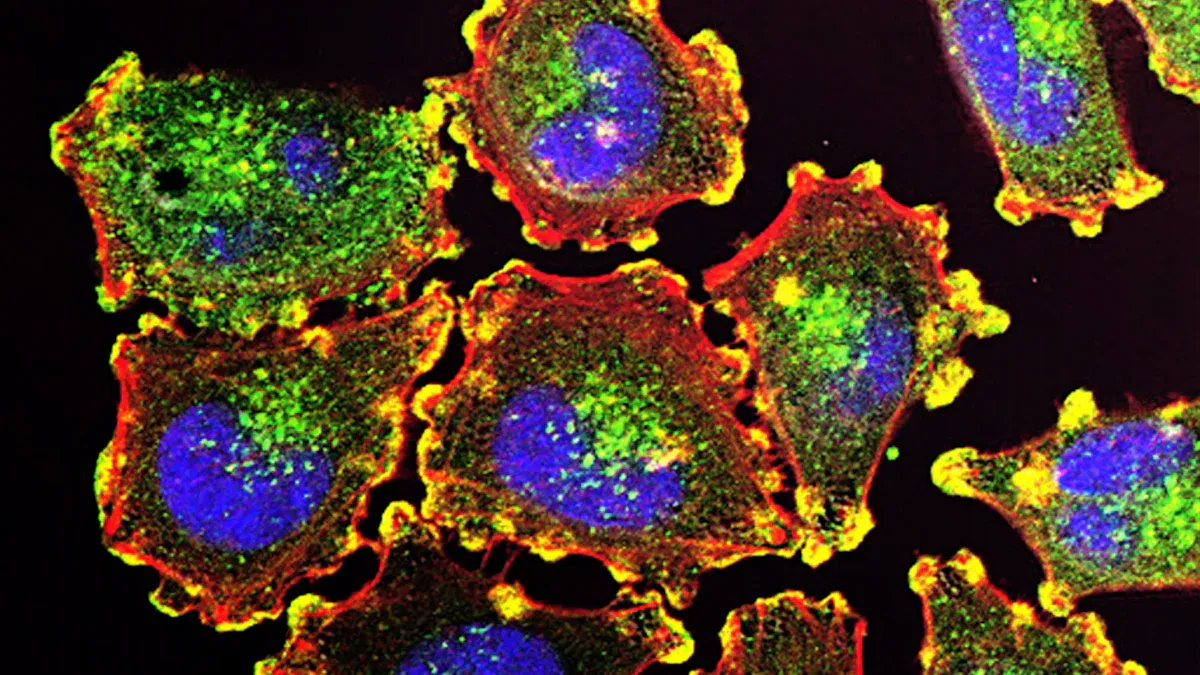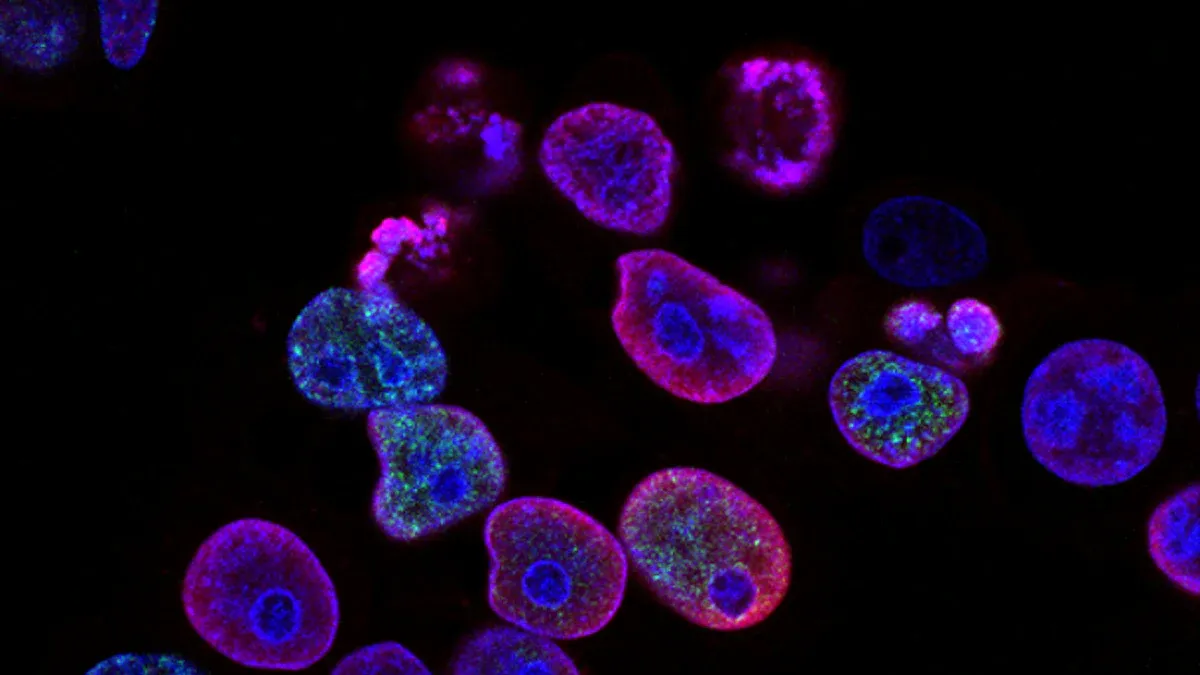What Is Invasive Lobular Carcinoma and How to Identify Its Symptoms

Invasive lobular carcinoma begins in the milk-producing lobules of the breast and spreads to nearby tissues. It accounts for about 10% to 15% of all breast cancer cases, making it less common than invasive ductal carcinoma. Recognizing its symptoms early can help you seek timely medical care. Early detection improves treatment outcomes and increases the chances of recovery. Since ILC symptoms are often subtle, paying attention to changes in your body is essential.
Key Takeaways
Invasive lobular carcinoma (ILC) is a special kind of breast cancer. It grows in thin lines, which makes it harder to find.
Finding ILC early is very important. Regular check-ups and noticing small changes in your breasts can help with better treatment.
Signs of ILC include changes in how your breast feels, its size, or shape. You might not feel a clear lump, so watch for anything unusual.
Treatments for ILC include surgery, radiation, and hormone medicine. A treatment plan made just for you can help you live longer.
Staying healthy and taking care of your feelings are important after ILC treatment. Regular doctor visits can check your health and catch any return of cancer early.
Understanding Invasive Lobular Carcinoma
What Is Invasive Lobular Carcinoma?
Invasive lobular carcinoma begins in the lobules, which are the milk-producing glands in the breast. Unlike other breast cancers, this type spreads to nearby tissues in a unique way. Instead of forming a lump, the cancer cells grow in single-file strands. This growth pattern makes it harder to detect during routine screenings like mammograms. Invasive lobular carcinoma is more common in postmenopausal women and accounts for about 10% to 15% of all breast cancer cases.
How ILC Differs from Other Breast Cancers
Invasive lobular carcinoma has several distinct characteristics compared to invasive ductal carcinoma (IDC), the most common type of breast cancer.
Feature | Invasive Lobular Carcinoma (ILC) | Invasive Ductal Carcinoma (IDC) |
|---|---|---|
Growth Pattern | Single-file strands | Lump-like masses |
Cell Configuration | Alveolar, tubule-lobular variants | More common configurations |
Genetic Alteration | CDH1 gene loss | Less frequent CDH1 alterations |
Hormone Receptor Status | 95% ER-positive, 70% PR-positive | Varies, often ER-positive |
HER2 Status | Typically HER2-negative | Varies, can be HER2-positive |
ILC tumors often metastasize to unusual locations, such as the gastrointestinal tract or gynecological organs. These tumors also tend to be larger and diagnosed at later stages due to their subtle growth patterns.
Why Early Detection of ILC Matters
Early detection of invasive lobular carcinoma significantly improves treatment outcomes. Studies show that patients with stage I or II ILC who undergo lumpectomy and radiation therapy have a low risk of local recurrence (3%) and an average survival time of over 83 months. However, late detection can lead to more complications, as ILC has a higher risk of late recurrences and deaths compared to other breast cancers. Regular screenings and paying attention to subtle changes in your breast can make a big difference in catching this cancer early.
Symptoms of Invasive Lobular Carcinoma

Common Symptoms of ILC
Invasive lobular carcinoma often presents with symptoms that may not be immediately noticeable. Unlike other breast cancers, it rarely forms a distinct lump. Instead, you might observe changes in the texture or appearance of your breast. Below is a table summarizing some of the most commonly reported symptoms:
Symptom Description |
|---|
Dimpling, dent, or puckering of the skin of a breast |
Change in the size or shape of a breast |
Changes to the nipple, including inversion or pulling to one side |
A new area of fullness or swelling in the breast |
You may also experience:
Swelling in part or all of the breast
Skin irritation or dimpling resembling an orange peel
Pain in the breast or nipple
Nipple discharge that isn’t breast milk
Redness or thickening of the nipple or breast skin
Early Warning Signs
Early signs of invasive lobular carcinoma can be subtle. You might notice a vague sense of fullness or firmness in one breast. Sometimes, the skin texture changes slightly, or one breast appears larger than the other. These changes may seem minor, but they could indicate the presence of cancer. Pay attention to any unusual sensations or visible differences in your breasts.
If you observe redness, scaliness, or a pulling sensation in the nipple, consult a healthcare provider. Early detection can make a significant difference in treatment outcomes.
Why ILC Symptoms Are Often Subtle
The symptoms of invasive lobular carcinoma are harder to detect because of how the cancer grows. Unlike other types of breast cancer that form lumps, this cancer spreads in lines or sheets of cells. This growth pattern makes it difficult to feel during a self-exam or detect on a mammogram.
You might not notice any distinct mass, which can delay diagnosis. Mammograms and ultrasounds often miss this type of cancer due to its dispersed growth. Regular screenings and being mindful of subtle changes in your breast are essential for early detection.
Diagnosing Invasive Lobular Carcinoma
Key Diagnostic Tests
Mammograms and Ultrasounds
Mammograms are often the first step in detecting breast cancer. However, invasive lobular carcinoma can be challenging to identify through mammography due to its diffuse growth pattern. Tumors may appear as ill-defined masses or asymmetric densities, blending with surrounding tissue. This results in a sensitivity range of 57% to 79%, with up to 30% of cases going undetected.
Ultrasound offers better detection rates for ILC, especially for tumors that mammograms miss. Studies show that directed ultrasound identifies 73% of mammographically invisible tumors. Its sensitivity ranges from 68% to 98%, making it a valuable tool for further evaluation.
MRI Scans
Magnetic resonance imaging (MRI) is one of the most effective tools for detecting invasive lobular carcinoma. With a sensitivity of 93%, MRI excels at identifying tumors that other imaging techniques might miss. It is particularly useful for high-risk patients or when mammogram and ultrasound results are inconclusive. Experts recommend MRI for comprehensive screening, even though it is not yet a standard practice.
Biopsy Procedures
A biopsy remains the definitive method for diagnosing ILC. During this procedure, a small sample of breast tissue is removed and examined under a microscope. This test confirms the presence of cancer cells and provides critical information about hormone receptor status and other tumor characteristics.
Challenges in Diagnosing ILC
Diagnosing invasive lobular carcinoma presents unique challenges. Its diffuse growth pattern makes it harder to detect with standard imaging techniques like mammograms. This often leads to later-stage diagnoses and larger tumor sizes at detection. Additionally, ILC has a higher likelihood of lymph node involvement compared to other breast cancers.
Surgical treatment can also be complicated. The difficulty in visualizing tumors increases the risk of positive margins, which may require additional surgeries. Genetic testing, such as the 70-gene test (MammaPrint), can help identify patients at high risk for recurrence, aiding in treatment planning.
Treatment Options for Invasive Lobular Carcinoma

Surgical Options
Lumpectomy
A lumpectomy involves removing the cancerous tissue while preserving most of the breast. This option works well for early-stage invasive lobular carcinoma when the tumor is small and localized. Lumpectomy is often paired with radiation therapy to reduce the risk of recurrence.
Mastectomy
A mastectomy removes the entire breast and may be necessary for larger tumors or when cancer has spread extensively. Modified radical mastectomy, which includes lymph node removal, is a common approach for advanced cases.
The choice between lumpectomy and mastectomy depends on factors like tumor size, location, and patient preference. Below is a comparison of outcomes for these treatments:
Treatment Type | Local Recurrence Rate | Mean Overall Survival (months) |
|---|---|---|
Lumpectomy + Radiation | 83.6 | |
Modified Radical Mastectomy | 3% | 71.7 |
Radiation Therapy
Radiation therapy targets and destroys remaining cancer cells after surgery. It is highly effective in reducing recurrence rates, especially when combined with lumpectomy. The table below highlights its effectiveness:
Treatment Type | Local Recurrence Rate | Mean Overall Survival (months) |
|---|---|---|
Lumpectomy + Radiation | 3% | 83.6 |
Modified Radical Mastectomy | 3% | 71.7 |
Radiation therapy also helps preserve breast appearance when paired with breast-conserving surgery. You may experience side effects like skin irritation or fatigue, but these are usually temporary.
Chemotherapy and Hormone Therapy
Chemotherapy is less effective for invasive lobular carcinoma compared to other breast cancers. However, it can shrink tumors, making surgery easier, and improve survival for high-risk patients. Genetic testing can identify those who may benefit most from chemotherapy.
Hormone therapy, such as tamoxifen or aromatase inhibitors, works well for hormone receptor-positive ILC. It blocks estrogen, which fuels cancer growth, and significantly reduces recurrence risk. Your doctor may recommend hormone therapy for several years after surgery to ensure long-term protection.
Targeted Therapy for ILC
Targeted therapy offers a promising approach for treating invasive lobular carcinoma. This treatment focuses on specific molecules or pathways that drive cancer growth, making it more precise than traditional therapies. Researchers have made significant advancements in this field, providing new hope for patients.
Scientists have discovered biomarkers that help identify which patients may benefit from immune therapy. These biomarkers guide personalized treatment plans, improving outcomes.
The Leigh Pate Living Biorepository has been developed to study invasive lobular breast cancer. This resource supports research into new treatment strategies tailored to this unique cancer type.
New therapies target common mutations in lobular breast cancer, such as CDH1, HER2, and PIK3CA. These mutations play a key role in cancer progression and offer opportunities for innovative treatments.
Endocrine therapy remains a cornerstone of targeted treatment for invasive lobular carcinoma. Since 95% of these cancers are hormone-driven, therapies like tamoxifen or aromatase inhibitors effectively block estrogen, slowing tumor growth. Immunotherapy also shows potential due to the immunologically active nature of this cancer.
Survival rates for patients undergoing targeted therapy highlight its effectiveness. For high-risk patients, the disease-free survival (DFS) rate is 84.6%, while the distant metastasis-free survival (DMFS) rate is 89.4%. Low-risk patients fare even better, with DFS and DMFS rates of 92% and 96.6%, respectively. These statistics demonstrate the life-saving potential of targeted treatments.
Ongoing research focuses on overcoming endocrine resistance and identifying new therapeutic targets. These efforts aim to improve survival rates further and provide more options for patients. By staying informed about these advancements, you can better understand the evolving landscape of invasive lobular carcinoma treatment.
Follow-Up Care and Lifestyle Recommendations
Importance of Regular Medical Check-Ups
Regular medical check-ups play a vital role in your recovery journey after invasive lobular carcinoma treatment. These appointments help monitor your overall health and detect any signs of recurrence early. Your doctor may recommend a personalized follow-up care plan tailored to your needs. This plan often includes:
Necessary tests, such as imaging or blood work
A schedule for these tests
Specific doctors responsible for each test
Healthy living recommendations to support recovery
Additional resources to guide you through the process
Tip: Keep a record of your follow-up schedule and test results. Staying organized ensures you never miss an important appointment.
Frequent check-ups also allow your healthcare team to address any concerns or side effects you may experience. Open communication with your doctor ensures you receive the best care possible.
Managing Treatment Side Effects
Treatment for invasive lobular carcinoma can leave you with side effects that affect your daily life. Managing these side effects is essential for improving your quality of life. Common side effects include fatigue, skin irritation, and hormonal changes. To manage these effectively:
Rest when you feel tired, but try to stay active with light exercises like walking.
Use gentle skincare products to soothe irritated skin.
Discuss hormonal therapy side effects, such as hot flashes, with your doctor.
Note: If you experience severe or persistent side effects, report them to your healthcare provider immediately. Early intervention can prevent complications.
Healthy Lifestyle Tips for Recovery
Adopting a healthy lifestyle supports your recovery and reduces the risk of recurrence. Focus on maintaining a balanced diet rich in fruits, vegetables, lean proteins, and whole grains. Staying physically active helps improve your energy levels and overall well-being. Aim for at least 30 minutes of moderate exercise most days of the week.
Avoid smoking and limit alcohol consumption, as these can increase the risk of cancer recurrence. Prioritize mental health by practicing relaxation techniques like meditation or yoga. Joining a support group can also provide emotional encouragement during your recovery.
Reminder: Small, consistent changes in your daily habits can lead to significant improvements in your health over time.
Emotional and Mental Health Support
Coping with invasive lobular carcinoma can take a toll on your emotional and mental well-being. Prioritizing your mental health is just as important as managing your physical recovery. Here are some ways to support your emotional health during this journey:
Seek Professional Counseling
Talking to a licensed therapist or counselor can help you process your emotions. They can provide strategies to manage anxiety, depression, or fear of recurrence. Many cancer centers offer access to mental health professionals who specialize in supporting cancer patients.Join a Support Group
Connecting with others who have faced similar challenges can make you feel less alone. Support groups, whether in-person or online, allow you to share experiences, gain advice, and find encouragement. Look for groups specifically for breast cancer or invasive lobular carcinoma survivors.Practice Stress-Relief Techniques
Activities like meditation, deep breathing, or yoga can help you relax and reduce stress. These techniques improve your focus and promote a sense of calm. Even dedicating 10 minutes a day to mindfulness can make a difference.
Tip: Journaling your thoughts and feelings can also serve as a therapeutic outlet. Writing down your worries or achievements helps you reflect and track your emotional progress.
Lean on Your Support System
Family and friends play a crucial role in your recovery. Don’t hesitate to ask for help or share how you’re feeling. Letting loved ones support you can strengthen your relationships and ease your emotional burden.
Remember, taking care of your mental health is not a sign of weakness. It’s a vital part of your overall recovery. By addressing your emotional needs, you can build resilience and face the challenges ahead with greater confidence.
Recognizing the symptoms of invasive lobular carcinoma early can save lives. Early treatment reduces the chances of recurrence and mortality within the first five years. Patients who act promptly experience fewer recurrences (HR = 0.797) and deaths (HR = 0.756). However, delaying treatment increases risks over time.
Advancements in diagnostic tools and therapies offer hope for effective management. You have access to personalized care options that improve outcomes. Consult your healthcare provider to create a plan tailored to your needs. Taking proactive steps ensures the best possible path to recovery.
FAQ
What makes invasive lobular carcinoma different from other breast cancers?
ILC grows in single-file strands instead of forming lumps. This unique growth pattern makes it harder to detect during self-exams or mammograms. It also tends to spread to unusual areas, like the gastrointestinal tract, which is less common in other breast cancers.
Can you detect ILC through a self-exam?
ILC rarely forms a lump, so self-exams may not always detect it. Instead, look for subtle changes like thickened areas, skin dimpling, or nipple inversion. Regular screenings and paying attention to these signs can help you catch it early.
Is invasive lobular carcinoma treatable?
Yes, ILC is treatable. Options include surgery, radiation, hormone therapy, and targeted treatments. Early detection improves outcomes significantly. Your doctor will create a personalized treatment plan based on your cancer stage and overall health.
How often should you get screened for ILC?
Doctors recommend annual mammograms starting at age 40 for most women. If you have a family history of breast cancer or other risk factors, you may need earlier or more frequent screenings. Consult your healthcare provider for a tailored plan.
Does ILC have a high recurrence rate?
ILC has a slightly higher risk of late recurrence compared to other breast cancers. Hormone therapy and regular follow-ups reduce this risk. Staying vigilant about your health and attending all scheduled check-ups can help you manage this risk effectively.
---
ℹ️ Explore more: Read our Comprehensive Guide to All Known Cancer Types for symptoms, causes, and treatments.
See Also
Understanding Ductal Carcinoma In Situ And Its Signs
Identifying Angioimmunoblastic T-Cell Lymphoma Symptoms Effectively
Exploring Follicular Lymphoma And Its Key Symptoms
